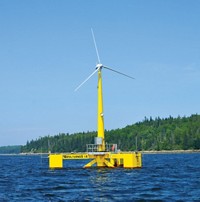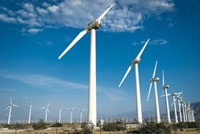Advertisement
Grab your lab coat. Let's get started
Welcome!
Welcome!
Create an account below to get 6 C&EN articles per month, receive newsletters and more - all free.
It seems this is your first time logging in online. Please enter the following information to continue.
As an ACS member you automatically get access to this site. All we need is few more details to create your reading experience.
Not you? Sign in with a different account.
Not you? Sign in with a different account.
ERROR 1
ERROR 1
ERROR 2
ERROR 2
ERROR 2
ERROR 2
ERROR 2
Password and Confirm password must match.
If you have an ACS member number, please enter it here so we can link this account to your membership. (optional)
ERROR 2
ACS values your privacy. By submitting your information, you are gaining access to C&EN and subscribing to our weekly newsletter. We use the information you provide to make your reading experience better, and we will never sell your data to third party members.
Environment
The Promise Of Renewables
Energy: Governments policies can speed up deployment, IPCC says
by Cheryl Hogue
May 10, 2011
| A version of this story appeared in
Volume 89, Issue 20
Nearly 80% of the world's energy supply could come from renewables by 2050 if governments adopt policies to accelerate deployment of these technologies, says a new U.N. report.
The report released on May 9 by the Intergovernmental Panel on Climate Change (IPCC) says government actions play a crucial role in the growth of renewable energy. But there is no one-size-fits all approach.
Instead, the report says, a combination of policies can be more effective and efficient. These include incentives for R&D, renewable energy quotas, favorable tax policies, rebates, and grants. Other examples are policies to help renewable energy developers locate projects and get financing.
"The report shows that it is not the availability of the resource, but the public policies that will either expand or constrain renewable energy development over the coming decades," says Ramón Pichs Madruga, cochairman of the IPCC working group that produced the report. He is an economist at the Center for World Economy Studies in Havana, Cuba.
Increasing renewables' share of the world's energy supply is important because it could help restrain the growth of greenhouse gas emissions from fossil fuels, the report points out.
The proportion of renewable energy deployed worldwide is likely to expand even if governments at local, state, and national levels don't enact new policies, the report says. But past experience shows that policies to encourage renewables provide bigger increases than doing nothing.
The report examined six types of renewables. One is bioenergy, which includes crops grown for fuel, agricultural residues, and livestock manure. A second is solar, such as photovoltaics and concentrated solar power, which involves mirrors or lenses focusing sunlight to heat water and create steam that drives a turbine. Another is capturing energy from the ocean's waves, tides, currents, and heat and salinity gradients. The other renewables covered in the report are geothermal energy, hydropower, and wind.
Deployment of renewable energy technologies in the future is anticipated to be highest in developing countries, the report says. Currently, developing countries are now home to more than half of the world's renewable energy capacity, it adds.






Join the conversation
Contact the reporter
Submit a Letter to the Editor for publication
Engage with us on Twitter